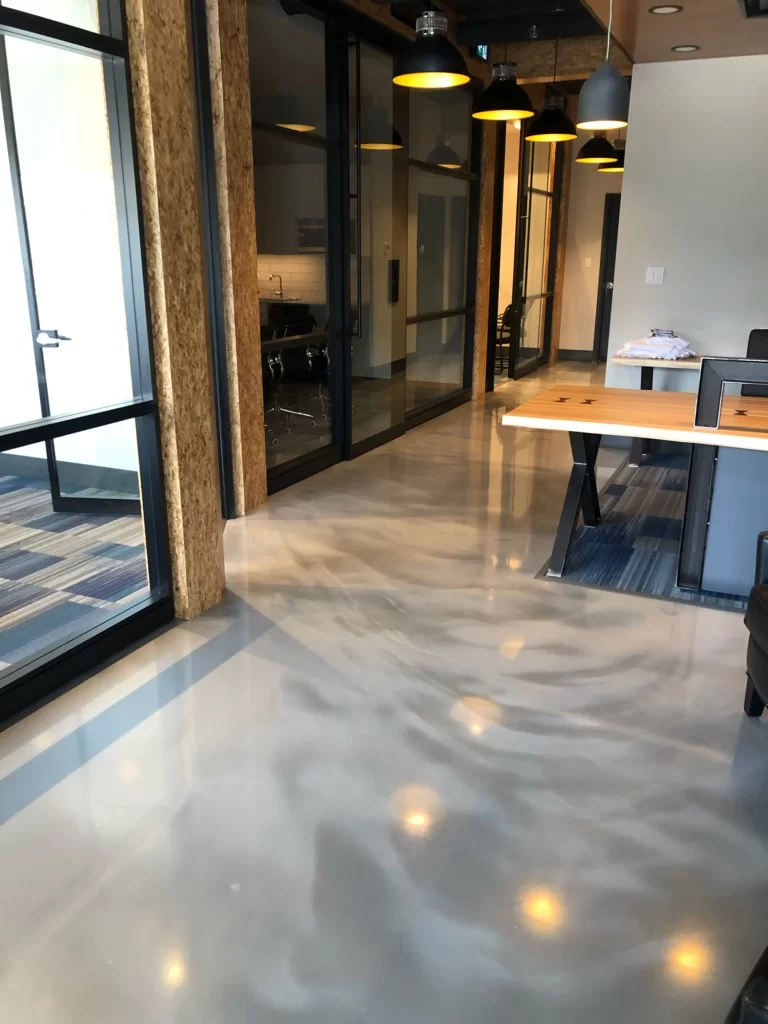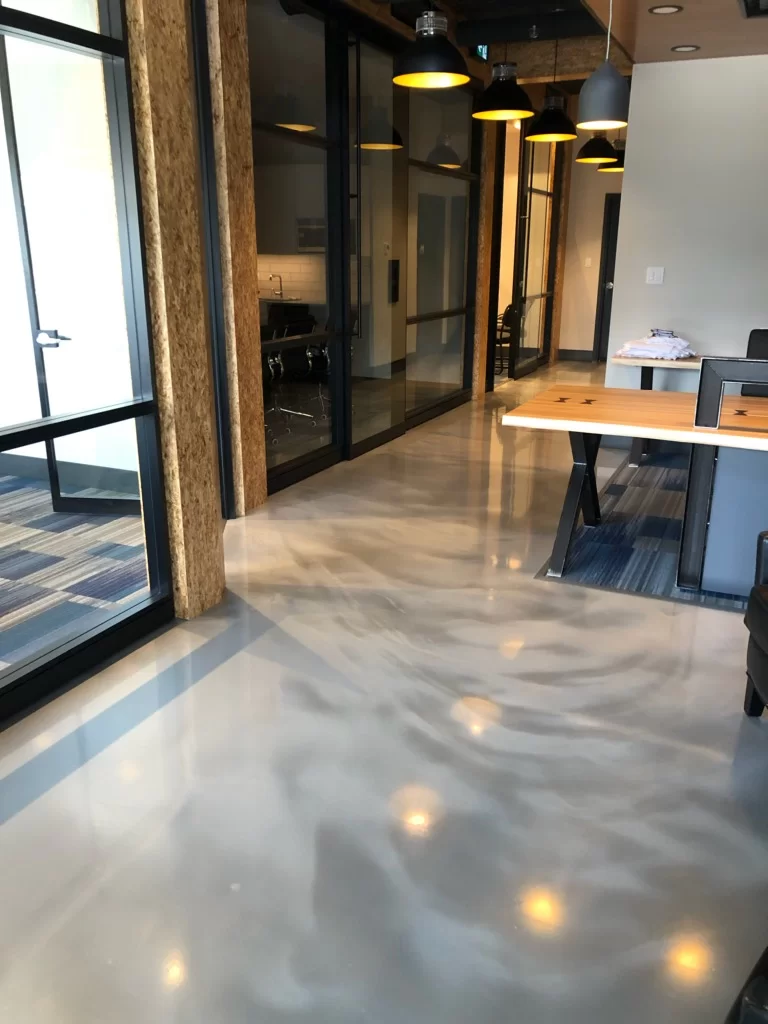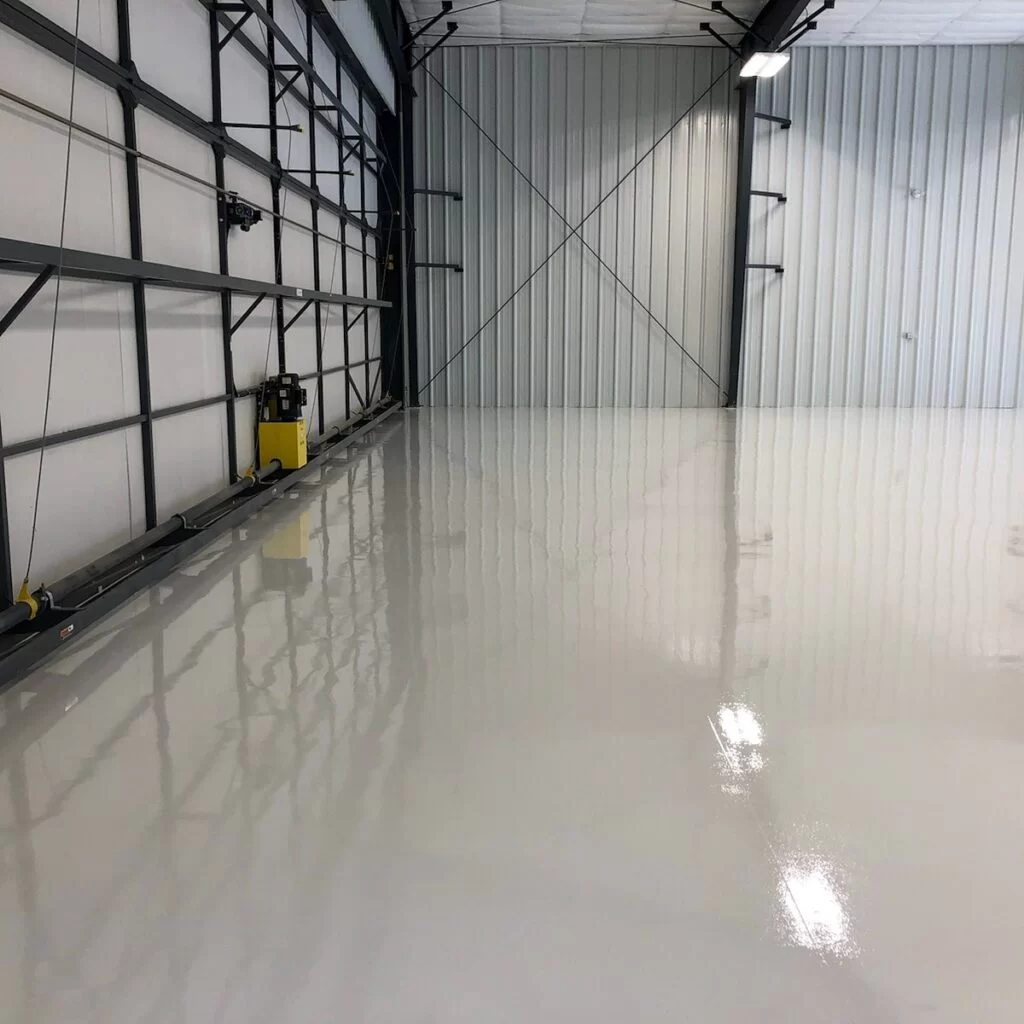Everything you need to know about epoxy floors: advantages, types of paint and how to apply
- Eurolatina

- Dec 29, 2022
- 5 min read
If you are considering applying an epoxy floor coating in your home or business, there are a few things you need to know before making your decision. Epoxy flooring is a floor coating made up of an epoxy resin and a hardener, which form a hard and durable layer after curing.
In this article, we will explore the advantages of epoxy flooring, the types of paint available, and how to apply them.
What is epoxy flooring and why is it a popular option for floor coatings:
Epoxy flooring is a floor coating made up of an epoxy resin and a hardener, which form a hard and durable layer after curing. It is a popular option for floor coatings in industrial and commercial settings due to its resistance to abrasion, chemicals, and moisture, as well as its ease of cleaning and maintenance. Additionally, epoxy flooring can be applied in a variety of colors and textures to create a custom look.
Types of epoxy floor paint available on the market and their characteristics:
There are several types of epoxy floor paint available on the market, each with its own characteristics and applications. For example, Eurolatina's Exaprimer is a two-component epoxy primer used as a preparatory floor coating. It has the function of buffering and sealing, providing anchoring for the next layers.
Exapiso is a two-component solvent-based epoxy resin that provides good chemical and mechanical resistance, supporting high traffic. Eurocoat is a two-component epoxy finish with ease of application, self-shine, and high layer thickness, providing a high-quality aesthetic finish. And
Self Leveling is a high-solid two-component self-leveling epoxy resin, ideal for sophisticated environments.
Preparation of the floor before applying epoxy paint, including cleaning and leveling:
Before applying epoxy paint, it is important to prepare the floor properly to ensure successful application. This includes cleaning the floor to remove dirt, dust, and other debris, as well as sanding the floor to remove any old coatings or irregularities on the surface. If the floor has irregularities or depressions, it may be necessary to apply a leveling layer to create a smooth and uniform surface before applying the epoxy paint.
Application of epoxy paint, including necessary equipment and techniques:
The application of epoxy paint is usually done in two stages: mixing the epoxy resin and hardener, and the actual application. It is important to follow the manufacturer's instructions and mix the resin and hardener accurately to ensure proper curing and a uniform layer. In addition, it is important to use personal protective equipment, such as gloves, glasses, and a mask, to protect yourself during the process. After mixing the resin and hardener, it is common to use a roller or brush to apply the paint evenly. Some types of epoxy paint can also be applied with a spray gun.
Maintenance and cleaning of the floor after applying epoxy paint:
After the epoxy paint has fully cured, the floor should be maintained according to the manufacturer's recommendations. This typically includes regular cleaning of the floor with specific cleaning products for epoxy floors and using protective products to help extend the life of the coating. It is important to avoid abrasive or strong chemical cleaning products as they can damage the floor. To clean the epoxy floor, simply gently wipe with a damp cloth or use a floor washing machine, following the manufacturer's instructions. In case of persistent stains or dirt, it is possible to use a slightly abrasive cleaning product, but it is important to test on a small area before applying to the entire floor.
Common problem solutions, such as cracks or peeling of the paint:
Sometimes, the epoxy floor may suffer damage such as cracks or peeling. These problems can be caused by factors such as excessive traffic, extreme weather conditions, or inappropriate use of cleaning products. If the floor shows these problems, it is important to remove the damaged paint and apply a new layer of paint to restore the floor.
To solve problems of cracks or peeling in the epoxy paint, it is important to first identify the cause of the problem. If the floor is suffering from excessive traffic, it may be necessary to increase the thickness of the paint layer to improve resistance. If the floor is exposed to extreme weather conditions, it is important to use paints specially formulated to withstand these conditions. And if the floor is being cleaned with inappropriate products, it is important to switch to specific products for epoxy floors or follow the manufacturer's cleaning recommendations.
After identifying the cause of the problem, it is important to carefully remove the damaged paint, using specific paint removal products for epoxy floors. Next, the floor surface must be prepared, sanding and cleaning it to remove any paint residue or dirt. Then, apply a new layer of epoxy paint following the manufacturer's instructions and ensuring precise mixing of the resin and hardener. With these measures, it is possible to restore the epoxy floor and extend its life.
Current trends in epoxy floor paints and how they can be used in different applications:
Currently, there are several trends in epoxy floor paints, such as the addition of fluorescent pigments to create lighting effects, the creation of customized patterns and textures using molds, or the use of self-gloss paints to create a luxurious look. These trends can be used in a variety of applications, such as warehouses, industrial facilities, and commercial spaces. In addition, some epoxy floor paint brands offer a wide range of colors and finishes, allowing for even more customization and creativity in floor design.
Comparing different types of floor coatings and when to use epoxy paint compared to other options:
There are several options for floor coatings available, each with its own advantages and disadvantages. When it comes to choosing the ideal floor coating, it is important to evaluate factors such as expected traffic, the intended use of the space, and environmental conditions. In general, epoxy paint is a durable and resistant option, ideal for high-traffic industrial and commercial environments. However, it can be more expensive and time-consuming to apply compared to other options such as laminate or vinyl.
Safety considerations when working with epoxy paint and protective measures to take:
Wearing personal protective equipment: It is important to wear personal protective equipment such as gloves, goggles, and a mask to protect oneself from the epoxy paint and the chemicals involved. It is also important to check that this equipment is in good condition and to replace it if it is damaged or worn.
Following the manufacturer's instructions: Each type of epoxy paint has its own usage instructions and safety precautions. It is important to read and follow these instructions to ensure safety during the application process.
Ventilating the work environment: Epoxy paint can release toxic gases during the curing process, so it is important to ventilate the work environment to ensure the circulation of fresh air.
Storing products properly: Epoxy paint products should be stored in a cool, dry place away from heat sources and flames. It is important to check the manufacturer's storage instructions and follow these recommendations to ensure safety.
In conclusion, epoxy flooring is a versatile and durable option for industrial and commercial floor coatings. In addition to its resistance to abrasion, chemicals, and moisture, it is also easy to clean and maintain. Eurolatina offers a wide range of epoxy paints to meet different needs and environments, including Exaprimer, Exapiso, Eurocoat, and self-leveling. Each of these products has been developed with the goal of providing quality and protection for our customers' products. If you are looking for a durable and high-quality floor coating solution, don't hesitate to contact Eurolatina for more information about our products and services.
























Thanks for sharing maintenance tips! I didn’t realize it was so easy to clean.For more info visit our official website https://trisoultechnologies.com/ or contact us @+91 810 563 4002. For more info visit our official website https://trisoultechnologies.com/ or contact us @+91 810 563 4002.